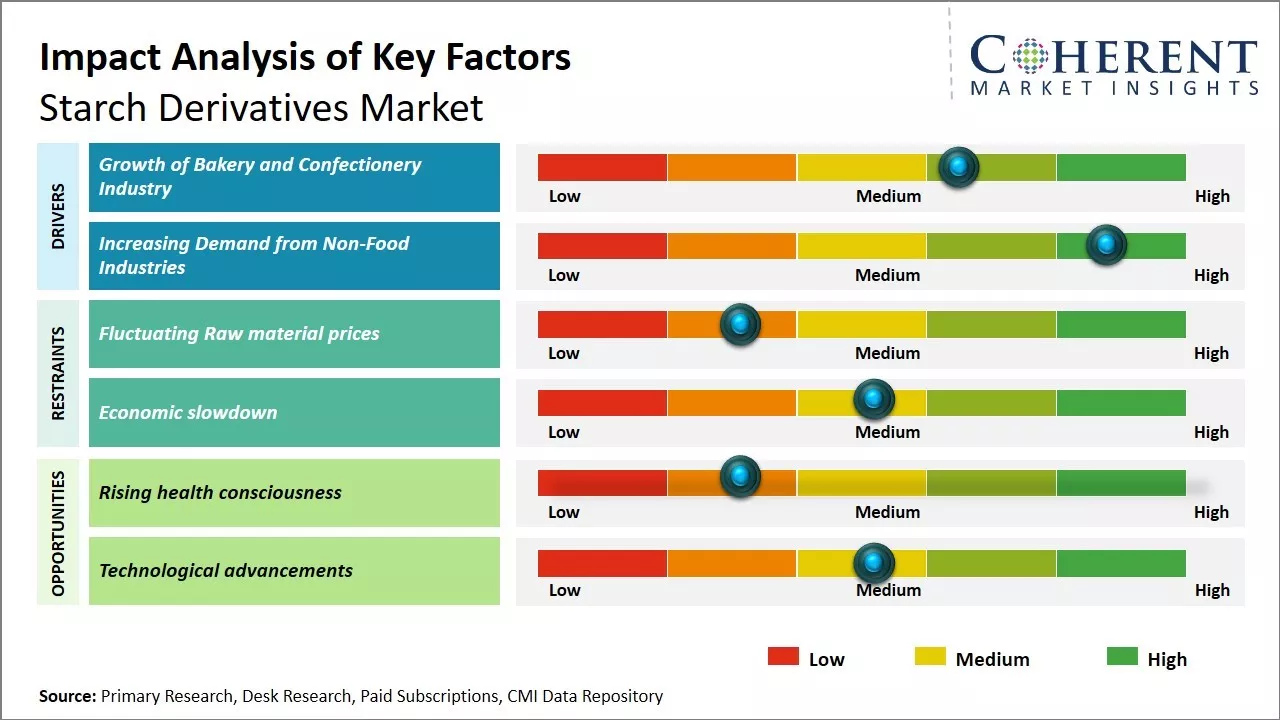The starch derivatives market is estimated to be valued at USD 62.55 Bn in 2025 and is expected to reach USD 80.72 Bn by 2032, growing at a compound annual growth rate (CAGR) of 3.7% from 2025 to 2032.

To learn more about this report, Request sample copy
Starch derivatives have wide applications in various industries such as food & beverages, paper, textile, and pharmaceutical. The rising demand from these industries is driving the growth of this market. The starch derivatives market is expected to witness strong growth over the forecast period. Increased consumption of convenience and processed food globally is projected to boost the growth of the market. Moreover, rising need for biodegradable products across industries to cater to sustainability goals will provide opportunities for manufacturers. However, volatility in raw material prices may hamper the market growth to some extent over the next few years.
Growth of the Bakery and Confectionery Industry
The bakery and confectionery industry has seen steady growth globally over the past few years. The demand for bakery and confectionery products has increased significantly across regions due to increasing consumer awareness about health and taste, rising disposable incomes, and busy lifestyles. Starch derivatives play a key role in the bakery and confectionery sector as they are used as stabilizers, thickeners, and texturizers in a wide variety of products. Starches extracted from potatoes, maize, and wheat are the most commonly used starch derivatives in the industry. They allow for improved texture and quality in baked goods as well as make creams, lotions and other fillings easier to mix. For instance, modified starches are increasingly being used in cake mixes as they enhance moisture retention and provide volume and structure. Similarly, bakery products such as bread benefit from starch derivatives which help improve softness and freshness. Additionally, confectionery items like chocolate, candies and chewing gums employ starch derivatives to control crystallization and delay gumming. A significant trend in recent times is the rising demand for clean label and organic products. In line with this, manufacturers are utilizing starch sources such as cassava and arrowroot more often in place of GM corn and potato starches. According to FAO, cassava production reached over 280 million metric tons in Africa alone in 2020. This indigenous availability of cassava and other starches in growth regions has made it possible to formulate more natural products. Furthermore, developments in starch modification technology have significantly improved textures without compromising on taste. This allows the industry to cater to a wider variety of baked snacks and desserts.
Joining thousands of companies around the world committed to making the Excellent Business Solutions.
View All Our Clients